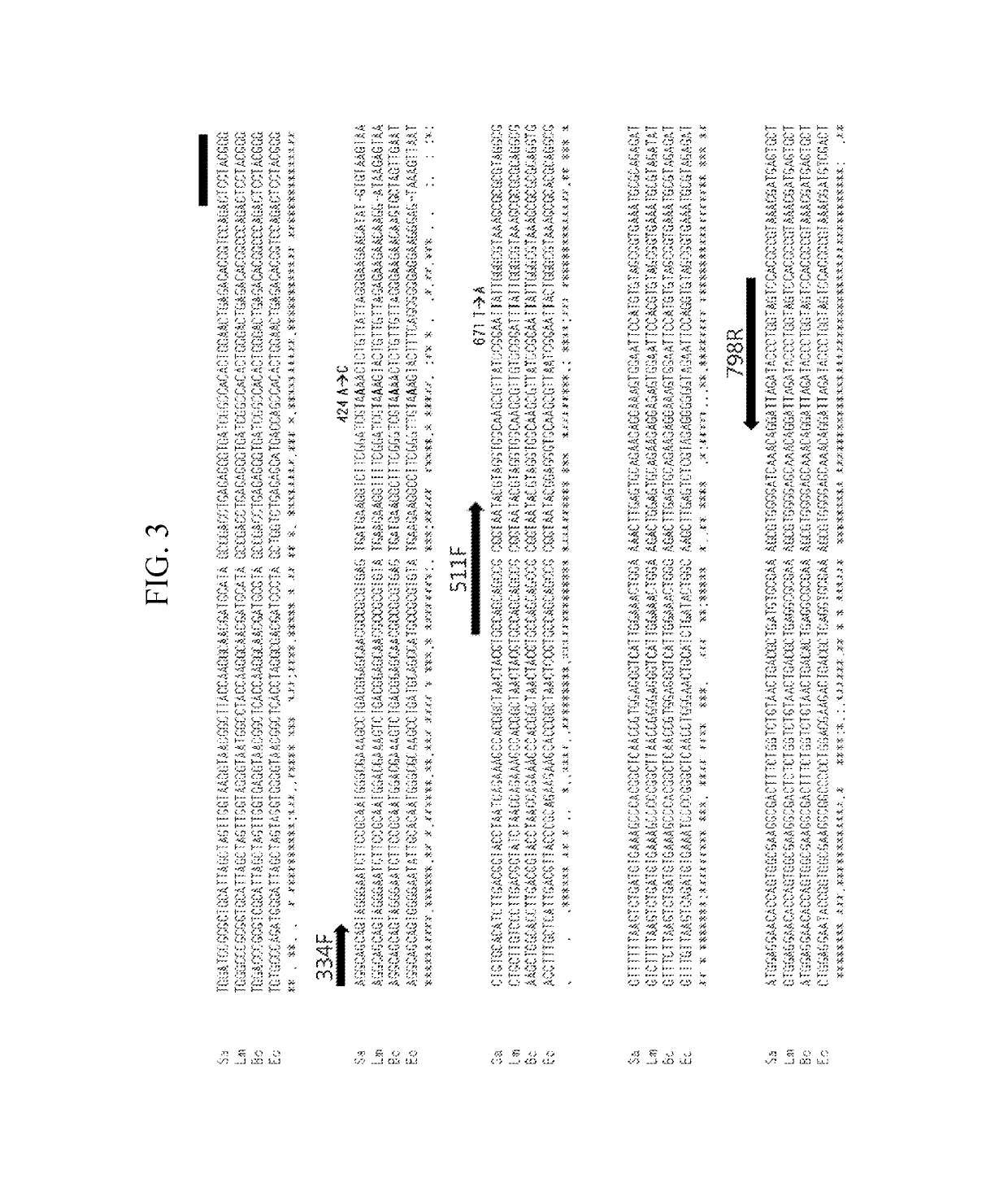Quantitative analysis method using microorganism 16S rDNA gene having single nucleotide polymorphism
a technology of microorganisms and rdna, applied in the field of quantitative analysis methods using microorganism 16s rdna genes having single nucleotide polymorphism, can solve the problems of gene-based microbial community analysis limitation, differences in genome extraction and amplification efficiency, etc., to improve the medical and industrial utility of microorganisms and improve the accuracy of analysis
- Summary
- Abstract
- Description
- Claims
- Application Information
AI Technical Summary
Benefits of technology
Problems solved by technology
Method used
Image
Examples
Embodiment Construction
) Preparation of SNP 16S DNA
[0018]SNP 16S DNAs were prepared with respect to Escherichia coli, Bacillus cereus, Listeria monocytogenes, and Staphylococcus aureus. 16S rDNA nucleotide sequences of the four kinds of microorganisms were obtained from NCBI GenBank, and aligned using a ClustalW-based multiple sequence alignment program (http: / / www.genome.jp / tools / clustalw). The nucleotide sequence was substituted so as to have nine single nucleotide polymorphisms scattered at locations which are close to variable regions and at which an interspecies nucleotide sequence homology is excellent on the aligned nucleotide sequence (FIG. 1). Four kinds of SNP 16S DNAs having nine single nucleotide polymorphisms as compared to the 16S rDNAs of the four microorganisms were prepared (Bioneer, Korea), respectively, and inserted into a plasmid vector (pGEM-B1™, Bioneer). Nucleotide sequences of the prepared four kinds of SNP 16S DNAs were confirmed using a 3730 DNA analyzer (Life Technologies, Carls...
PUM
| Property | Measurement | Unit |
|---|---|---|
| volume | aaaaa | aaaaa |
| temperature | aaaaa | aaaaa |
| temperature | aaaaa | aaaaa |
Abstract
Description
Claims
Application Information
 Login to View More
Login to View More - R&D
- Intellectual Property
- Life Sciences
- Materials
- Tech Scout
- Unparalleled Data Quality
- Higher Quality Content
- 60% Fewer Hallucinations
Browse by: Latest US Patents, China's latest patents, Technical Efficacy Thesaurus, Application Domain, Technology Topic, Popular Technical Reports.
© 2025 PatSnap. All rights reserved.Legal|Privacy policy|Modern Slavery Act Transparency Statement|Sitemap|About US| Contact US: help@patsnap.com



